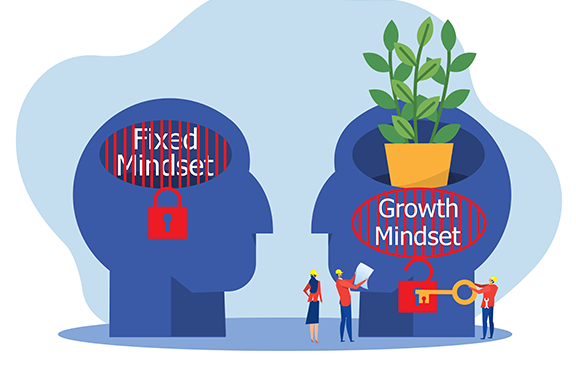
By teacher guest blogger Kathryn Rose
With several years of pandemic education in the rearview mirror, it’s likely that you spent at least some of your summertime asking the question, “What did I really learn this year?”
At this point, you’ve probably learned to teach difficult subject matter online. You’ve probably learned about masking techniques and how to keep up with rapidly-changing requirements. And you have definitely stretched yourself in the time and service to do your job well in the face of extraordinary circumstances.
And yet, every summer, you ask yourself, “What’s next? What could be better next year?” And why wouldn’t you? Teachers are always the best students and your building is full of growth possibilities for both you and your students.
Growth mindset isn’t a new term. It has likely been thrown around the teacher’s lounge and woven into your staff meetings and professional development courses. At this point, it may feel like a dusty term. However, I would like to propose to you that growth mindset is actually the root of a very rich educational tree. Educators can hit higher standards and goals for both themselves and their students if they imbibe a mindset that puts personal development at the center.
But how is a healthy growth mindset achieved?
For one thing, it can’t start and stop at awareness. Growth mindset requires doing. It is acknowledging that a healthy learning culture starts with a safe environment that holistically honors all learners – their personal experiences, their cultures, and their particular obstacles. When an educator can create an environment that feels safe and welcoming, they are in a position to not only teach their students classroom material but how to approach difficult subject matter across a wide range of disciplines.
Let’s take a closer look.
The first step towards creating a classroom environment centered around a growth mindset is to understand long-term brain development and the potential you carry to shift your student’s overall approach to school. You can start by teaching your students about neuroplasticity – the amazing ability of our brains to continue to re-wire themselves in response to learning new things, throughout our lives. With every lesson we are given at school, we develop our abilities. When educators pull back the curtain and teach students how to manage their stress and emotions, we place an enormous amount of power into their lap. They have the ability to develop their brain! How cool is that!
Teaching your students the difference between a fixed and a growth mindset is an excellent next step. A fixed mindset refers to an individual that believes that there is no room for growth or development. In essence, things just are the way that they are. I cannot learn math. I am bad at this and there is no room for change. I will just never know my multiplication tables!
On the other hand, a person with a high growth mindset believes they can change even their most basic characteristics. I am really struggling with multiplication but I am adaptable and can use many strategies to be the type of person who is good at math!
Alongside teaching about the neuroplasticity of the brain, educators must find ways to connect with students and parents in a way that develops a deep sense of trust. Students and parents must feel seen and heard. They need to feel comfortable being vulnerable in your classroom, and that often starts with you exhibiting those behaviors in professional settings. It is important to consider how you will capture the insights of both your parents and students. How do students feel about the progress they are making on a weekly basis? Do the parents feel like they can approach you when their learner is struggling?
A key component to building a trusting relationship is knowing how to give feedback and praise that is both specific and timely. Providing genuine praise can shape a learner’s inner voice and set the tone when it comes to class wide problem solving and management. Learn to praise the process of learning - not just the end result!
If all this makes sense for your students, it certainly applies to you as well! You are worthy of opportunities that help you grow both professionally and personally. Seek out personal development opportunities that inspire your curiosity and a lifelong pursuit of learning. Do not be afraid to ask your administration for convention opportunities or classes that are outside of what would be considered “a normal scope of practice.” If it excites you and makes you want to learn then it is worth pursuing.
Summer is a great time to begin nurturing a growth mindset. Read books that take you to faraway places, enjoy good food and good friends. You deserve rest and growth inside and outside of the classroom!
------------------------------------------
About Kathryn Rose
Kathryn Rose is currently a virtual tutor and a museum resource teacher. She also freelances for businesses and startups in the education field. She has taught at her city’s botanic garden for 12 years and has been a Social Studies teacher in both private and public schools.


